Riders are often seeking a “quiver killer” mountain bike that slays downhills, crushes uphills, and will feel fun to ride on any terrain. In this category, the Specialized Stumpjumper and Santa Cruz Hightower are the benchmarks. If you’re looking for the most versatile mid-travel trail bike, these are the top two to consider.
So if you’re interested in a Stumpjumper or Hightower, how do you know which is right for you? We can't definitively answer whether one bike is “better” than the other (sorry). Instead, this comparison aims to compare their history, geometry, suspension, and performance to help you decide. We will also look at their popularity with our shop riders and a few alternatives too.
[button]Shop mountain bikes[/button]
Contents
History
Specialized Stumpjumper
The Stumpjumper (or “Stumpy”) is a classic bike with nearly 40 years of history. Specialized first introduced it in 1981 and it is widely considered to be the first mass-production mountain bike. In the early days of mountain biking, riders had the option of klunker style bikes (ballon-tire cruisers modified for off-road use) or custom, purpose-built machines that had to be ordered through smaller builders.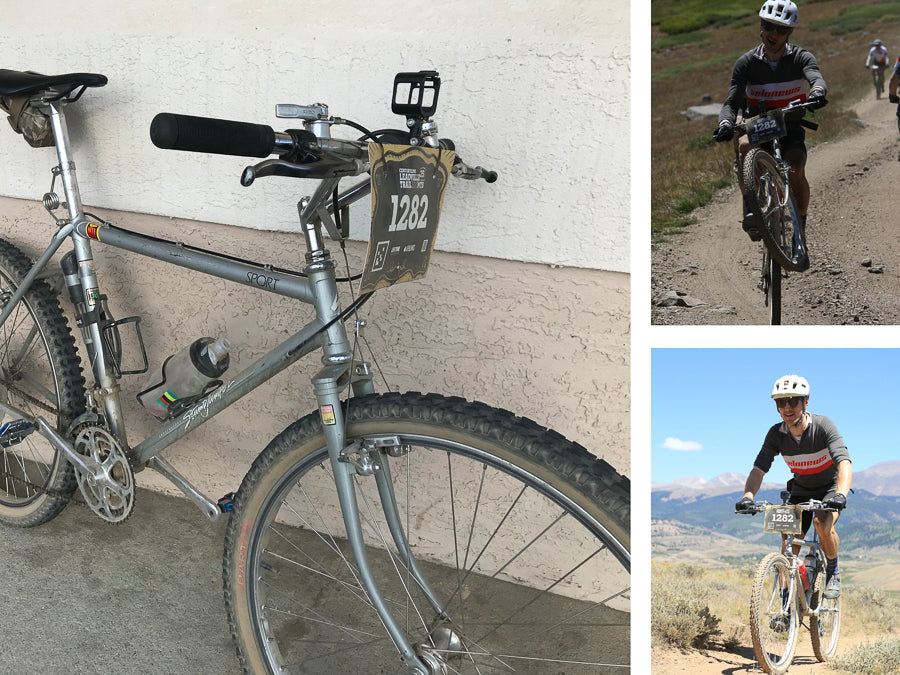
Our own Spencer Powlison still rides his 1983 Stumpjumper Sport. He even raced the Leadville Trail 100 on it!
Specialized founder, Mike Sinyard envisioned the Stumpjumper as a mass-produced bike that could emulate the geometry and performance of custom mountain bikes. The design was based on an early Tom Ritchey bike Sinyard owned, as well as a custom Lighthouse Cycles Chaparral designed by Tim Neenan. Neenan drew up plans for the original Stumpjumper and went with Sinyard to Japan to source a producer.
For mass-production, the frame was TiG welded instead of fillet-brazed (a technique used for many custom frames of the time). This reduced labor and manufacturing costs. The bike was an immediate success and played a huge role in mountain biking’s booming popularity through the '80s and '90s. Today, the original Stumpjumper is historically significant enough to be on display in the Smithsonian.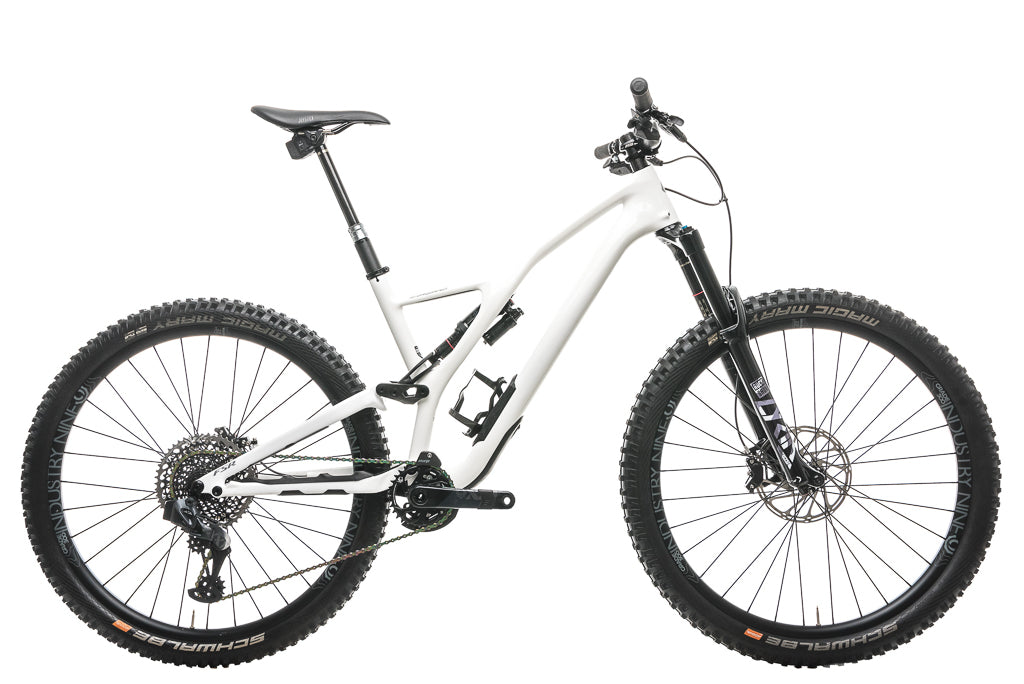
The previous generation Stumpjumper (2019-2020) introduced the Stumpjumper's signature asymmetric carbon frame. A carbon arm extends around the right side of the rear shock adding support and lateral stiffness for better tracking through rough terrain. It uses a 150mm fork and came in a 27.5” version with 150mm of rear travel and a 29” version with 140mm.

Then for 2021, the Stumpjumper underwent a major redesign. The geometry is much longer and slacker, and it's switched from an FSR suspension system to a linkage-driven single pivot design with carbon flex-stays. Travel has been reduced to 140mm front and 130mm rear, and it rolls on 29" wheels. The entry-level Stumpjumper Alloy uses an aluminum rear triangle, so it continues to use the more traditional FSR system.
Alloy frames are available for entry-level builds and carbon frames for Comp, Pro, and S-Works builds. One of the frame’s nicest features is the SWAT box storage system in the downtube, which stores spare tubes, tools, food, or other small items in a covered compartment built into the frame.
Check out our Stumpjumper buyer's guide to learn more about how the Stumpjumper has evolved through the years.
[newsletter]
Santa Cruz Hightower
Before the Hightower, Santa Cruz offered the beloved Tallboy LT, a long-travel version of the Tallboy 29er XC bike. When it was discontinued, riders eagerly awaited a successor. The Hightower finally arrived in 2016, a transitional period in mountain biking. 29er mountain bikes were on the cusp of widespread acceptance, and the new, wider, plus tire size (27.5+) was dominating industry headlines.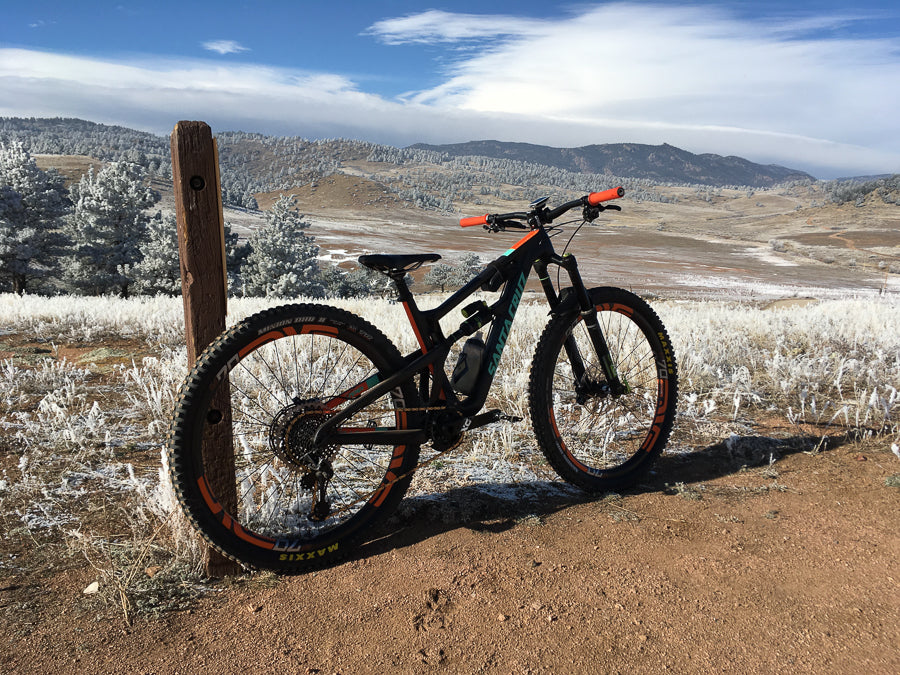
My personal 29er Hightower CC saw a lot of use.
The new Hightower featured Santa Cruz’s proven Virtual Pivot Point (VPP) suspension platform and 135mm of travel (the same as the Tallboy LT). But unlike the old Tallboy, the Hightower was longer and slacker, and it functioned more like a big-wheeled version of the Bronson than a hopped-up XC bike. A flip-chip in the rocker arm allowed riders to adjust the geometry for 29” or 27.5+ tires. It used a 140mm fork for 29ers and a 150mm fork for 27.5+ versions.
The Hightower was an instant success that earned stellar reviews and strong sales. Even Santa Cruz’s pro enduro racers began to choose the Hightower over the longer travel, Bronson and Nomad 27.5” bikes. It became clear that the larger 29” wheels offered a significant advantage for enduro racing.
It became popular for riders to slack out 29" Hightowers with 150mm and 160mm forks, and some even used longer-stroke shocks to increase rear travel. People were hungry for a Hightower that offered a bit more downhill capability so Santa Cruz responded with the Hightower LT, a long-travel version with 150mm of rear travel.
In 2020, the Hightower was completely refreshed. The LT version is gone and now there is a single 140mm travel model with a 150mm fork. The flip-chip remains, but the bike is now designed specifically for 29” wheels with no 27.5+ option. The biggest change is the switch to the lower-link shock configuration, which is used on Santa Cruz’s more downhill oriented models. Geometry has been further tweaked to make the newest Hightower the most capable downhiller yet. The frame is available in high-end carbon CC, carbon C, and aluminum versions.
Geometry
|
Geometry |
Specialized Stumpjumper (S3) |
Santa Cruz Hightower (Med) |
|
Reach |
455mm / 450mm (high/low) |
453mm / 450mm (high/low) |
|
Stack |
618mm / 622mm |
610mm / 612mm |
|
Head angle |
65.5° / 65° |
65.5° / 65.2° |
|
Seat angle |
76.5° / 76° |
77° / 76.6° |
|
BB height |
340mm / 333mm |
344mm / 340mm |
|
Chainstay length |
432mm |
433mm |
|
Wheelbase |
1200mm |
1207mm |
Mountain bike geometry has evolved a lot in the last five years. Both the previous generation Stumpjumper and Hightower were on-trend when released, but by the end of the decade, they lagged slightly behind cutting-edge geometry. In response, both Specialized and Santa Cruz modernized their flagship trail bikes by making them even longer and slacker.
Take a look at the numbers for the latest Stumpjumper and Hightower, and you'll see that they're extremely similar. Trail geometry is settling down, a both bikes are at what the industry is settling on a s a good sweet spot. Slack 65-degree head angles, long reaches, and low bottom bracket provide more stability and confidence in steep and fast terrain. While steep seat angles provide a good climbing position to get back up the hill.
Both bikes come with flip-chips at the rear shock to adjust geometry into high and low positions. High positions steepen the head tube and raise the bottom bracket, improving maneuverability. Low positions slack out the head tube and lower the bottom bracket, improving stability.
The two bikes are actually so similar in terms of geometry, other factors like suspension should weigh more into your buying decisions. To learn more about what the numbers represent, read our explanation of How Bike Geometry Works.
Suspension
|
Stumpjumper |
Hightower |
|
|
Suspension type |
Single pivot w/ flex stays |
VPP |
|
Rear travel |
130mm |
145mm |
|
Fork travel |
140mm |
150mm |
The Specialized Stumpjumper originally used FSR suspension, which stands for “Future Shock Rear.” FSR is a "four-bar" suspension or "Horst-link" design. The rear axle is located on the seat stay and another pivot is positioned just in front of and below the rear axle.
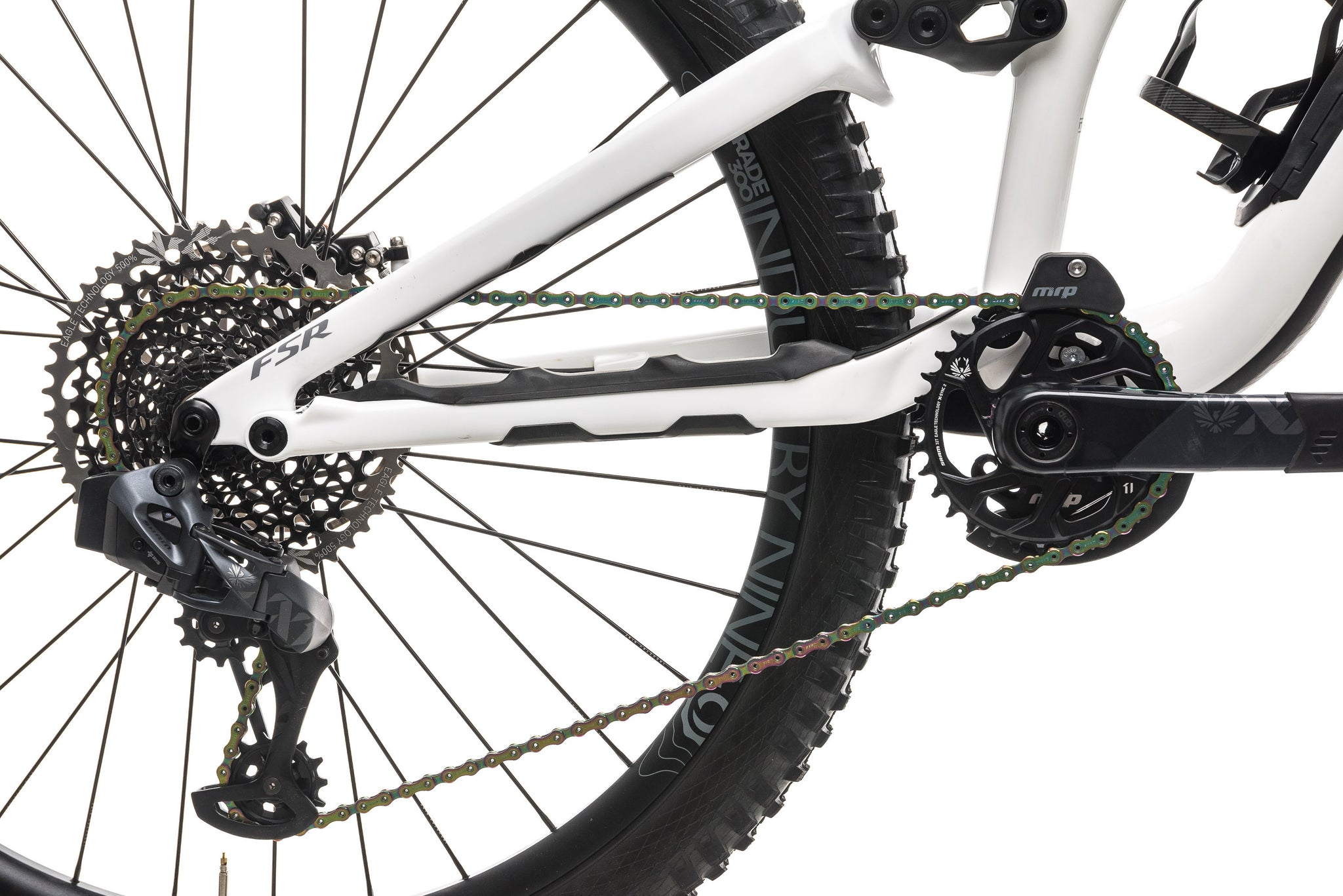
The FSR design found on pre-2021 Stumpjumpers. It's still used on Alloy Stumpjumpers and the Stumpjumper EVO.
FSR’s main advantage is that it’s a very “active” design, meaning it moves freely throughout compression and rebound. This helps the bike quickly respond to terrain, and it provides good small-bump compliance. The downside is lower pedaling efficiency, so older Stumpjumpers rely more on a lockout to provide a firm, efficient, bob-free pedaling platform.
 Note the missing chainstay pivot on the new flex stay suspension. The thinner carbon seatstays can flex to allow the suspension to move smoothly.
Note the missing chainstay pivot on the new flex stay suspension. The thinner carbon seatstays can flex to allow the suspension to move smoothly.
To address this, Specialized updated the latest (2021+) Stumpjumper to a linkage-driven single pivot suspension design using carbon flex-stays instead of a pivot in the chainstay. This is the type of suspension commonly found on cross country race bikes like the Specialized Epic. It eliminates moving parts, which reduces weight, and it's also tuned to provide greater pedaling efficiency so the bike stays bob-free and riders can climb without constantly using the shock lockout. Overall, the Stumpjumper suspension feel more "sporty" and XC-oriented.
 Santa Cruz uses VPP suspension, which stands for “virtual pivot point.” VPP is a “twin-link” style system that is identifiable by a solid (one piece) rear triangle that moves on two short links connected to the front triangle. There are other twin-link systems, but VPP uses counter-rotating links that turn in opposite directions, instead of co-rotating links that turn in the same direction. This movement produces an anti-squat profile that peaks in the middle of the travel, which helps provide pedaling efficiency without pedal kickback.
Santa Cruz uses VPP suspension, which stands for “virtual pivot point.” VPP is a “twin-link” style system that is identifiable by a solid (one piece) rear triangle that moves on two short links connected to the front triangle. There are other twin-link systems, but VPP uses counter-rotating links that turn in opposite directions, instead of co-rotating links that turn in the same direction. This movement produces an anti-squat profile that peaks in the middle of the travel, which helps provide pedaling efficiency without pedal kickback.
Santa Cruz claims that VPP strikes the right balance between pedaling efficiency and bump absorption. It's efficient enough that most riders won’t need to lock out the shock except on smooth climbs. However, with the newer lower-link shock mount design, there is a greater focus on downhill performance. This design is more progressive so it helps the bike soak up big hits and bad landings, encouraging riders to send bigger features.
Overall though, The Hightower's suspension system is heavier than the flex stay system used by the Stumpjumper, and may give the impression of more movement and bobbing while pedaling uphill with the shock unlocked. But with more travel and the progressive lower-link VPP design, riders will have more comfort, confidence, and room for error on gnarly terrain.
Descending
 Former Downhill World Champion, Miranda Miller, descends fast on the (previous generation) Stumpjumper.
Former Downhill World Champion, Miranda Miller, descends fast on the (previous generation) Stumpjumper.
Both bikes descend well. Both have slack head tubes and long reach to improve stability and confidence on steep, high-speed downhill trails. The Hightower’s rear suspension has a more progressive leverage rate, 15mm of additional travel, and it is paired with a bigger 150mm fork. Overall, it is better suited to handling big hits from features like rock gardens, jumps, and drops. The Stumpjumper can attack those same big features with no issue, but when it comes to going as fast as possible on ultra-gnarly terrain, it will feel slightly more sketchy than the more long-legged Hightower. But we all know that rider skill makes the biggest difference in downhill performance, so don't get too hung up on it.
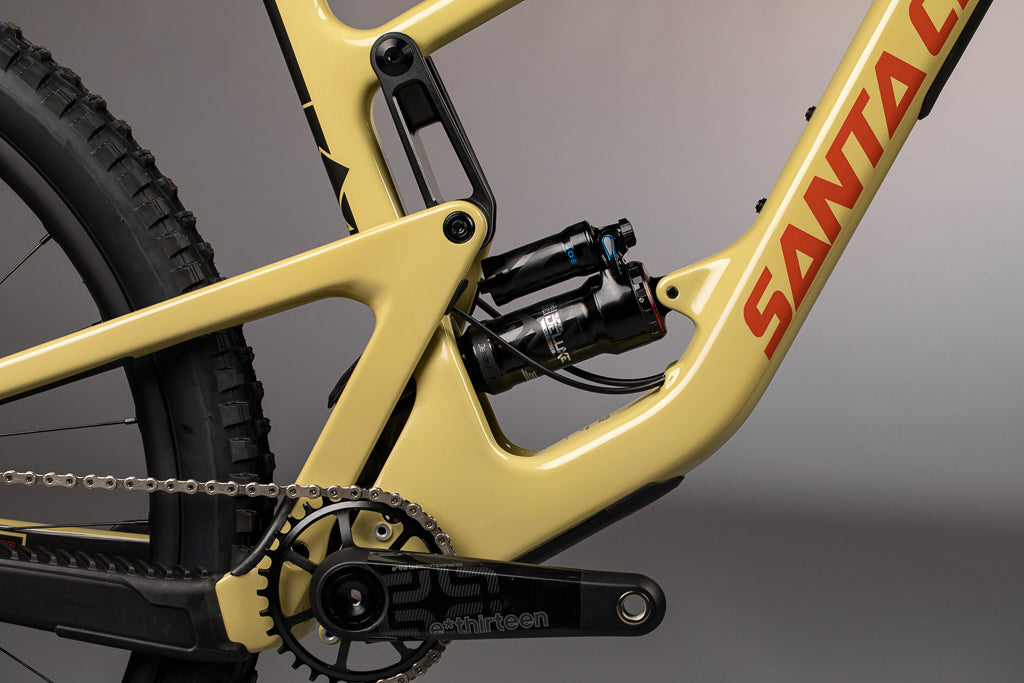
One interesting feature on the new Hightower is a special tailgate shuttle guard on the downtube to protect the frame when shuttling downhill trail in a pickup. Santa Cruz knows it's catering to a certain type of rider.
Climbing
 Reaching the descents requires climbing, the other half of the trail bike equation. To that end, both the Stumpjumper and Hightower provide great rear traction and enough anti-squat to make long climbs bearable. The Hightower is definitely no slouch, in fact, it's a great climber. But the Stumpjumper’s flex stay suspension is just lighter and more efficient feeling. It really does feel like a sportier XC bike when you press on the pedals and accelerate. Most riders will find it slightly easier to get up tough climbs on the Stumpjumper.
Reaching the descents requires climbing, the other half of the trail bike equation. To that end, both the Stumpjumper and Hightower provide great rear traction and enough anti-squat to make long climbs bearable. The Hightower is definitely no slouch, in fact, it's a great climber. But the Stumpjumper’s flex stay suspension is just lighter and more efficient feeling. It really does feel like a sportier XC bike when you press on the pedals and accelerate. Most riders will find it slightly easier to get up tough climbs on the Stumpjumper.
The Hightower does have a slightly steeper seat tube angle, great for helping riders scoot forward on steep terrain to get over the bottom bracket and front wheel, but the difference is less than a degree.
On average, the Stumpjumper also weighs one or two pounds less than the Hightower with a similar build. We know this because every bike sold at The Pro's Closet is weighed with a precise digital scale. The FACT Carbon Stumpjumper frame and flex stay suspension mean it's built just a bit lighter than a similar-sized Hightower CC carbon frame. The component spec has the biggest effect on overall weight, but for weight weenies, this little bit of frame weight could make a difference.
Competitors / alternatives
Ibis Ripmo
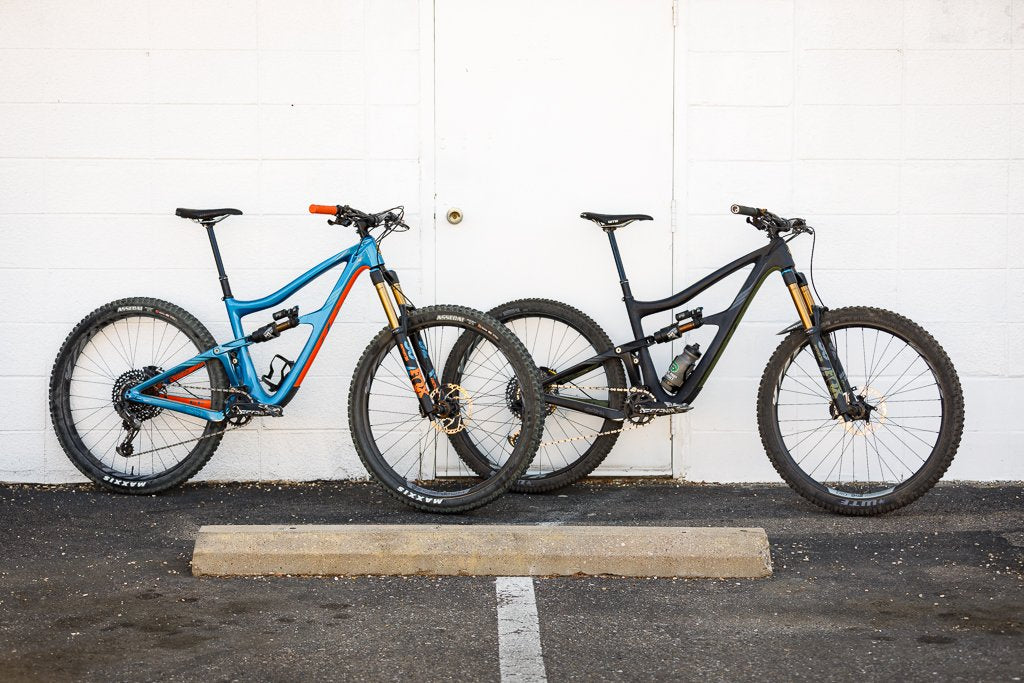 The Ibis Ripmo happens to be one of the most popular bikes at The Pro’s Closet. To date, five employees have purchased a Ripmo as their personal bike and given it stellar reviews. The current Ripmo has 29” wheels and 147mm of travel paired with a 160mm fork and a slacker 64.9-degree head tube. Rather than a quiver-killer trail bike, Ibis bills the Ripmo as an enduro race machine that is more downhill focused than the Stumpjumper or Hightower, despite not having much more travel. It uses DW-Link suspension, a twin-link system that, like to VPP, provides excellent pedaling efficiency.
The Ibis Ripmo happens to be one of the most popular bikes at The Pro’s Closet. To date, five employees have purchased a Ripmo as their personal bike and given it stellar reviews. The current Ripmo has 29” wheels and 147mm of travel paired with a 160mm fork and a slacker 64.9-degree head tube. Rather than a quiver-killer trail bike, Ibis bills the Ripmo as an enduro race machine that is more downhill focused than the Stumpjumper or Hightower, despite not having much more travel. It uses DW-Link suspension, a twin-link system that, like to VPP, provides excellent pedaling efficiency.
Yeti SB130
 Yeti is a high-end rival to Specialized and Santa Cruz. The SB130 is Yeti’s quiver killer, mid-travel superbike. It uses 29" wheels with 130mm of travel paired with a 150mm fork. Its geometry numbers are very close, with near-identical head and seat tube angles. The reach, however, is about 10mm longer, which makes it even more stable on fast downhills. It uses Yeti’s Switch Infinity suspension system to provide pedaling efficiency similar to the Hightower's. Despite having the same travel as the Stumpjumper, it does feel much plusher in rough terrain. It’s a good option for riders looking for a bike with comparable performance to the Stumpjumper and Hightower but with more boutique style.
Yeti is a high-end rival to Specialized and Santa Cruz. The SB130 is Yeti’s quiver killer, mid-travel superbike. It uses 29" wheels with 130mm of travel paired with a 150mm fork. Its geometry numbers are very close, with near-identical head and seat tube angles. The reach, however, is about 10mm longer, which makes it even more stable on fast downhills. It uses Yeti’s Switch Infinity suspension system to provide pedaling efficiency similar to the Hightower's. Despite having the same travel as the Stumpjumper, it does feel much plusher in rough terrain. It’s a good option for riders looking for a bike with comparable performance to the Stumpjumper and Hightower but with more boutique style.
Popularity
The Pro’s Closet is the world leader in used bikes. Our employees love cycling, obsess over bikes, and have access to a huge selection of products. They are all knowledgeable and opinionated so I polled riders in our shop to see which trail bike they preferred between the Stumpjumper and the Hightower. We had over 60 respondents to this poll and many explained why they would pick one over the other.
The chart below shows the results.
 Our local terrain features a lot of tough climbs and long descents, ideal for this style of bike. Our employees have a lot of experience with mid-travel trail bikes and several have even owned a Stumpjumper or a Hightower. In our poll, the Hightower just edged out the Stumpjumper with a little over half preferring the Hightower.
Our local terrain features a lot of tough climbs and long descents, ideal for this style of bike. Our employees have a lot of experience with mid-travel trail bikes and several have even owned a Stumpjumper or a Hightower. In our poll, the Hightower just edged out the Stumpjumper with a little over half preferring the Hightower.
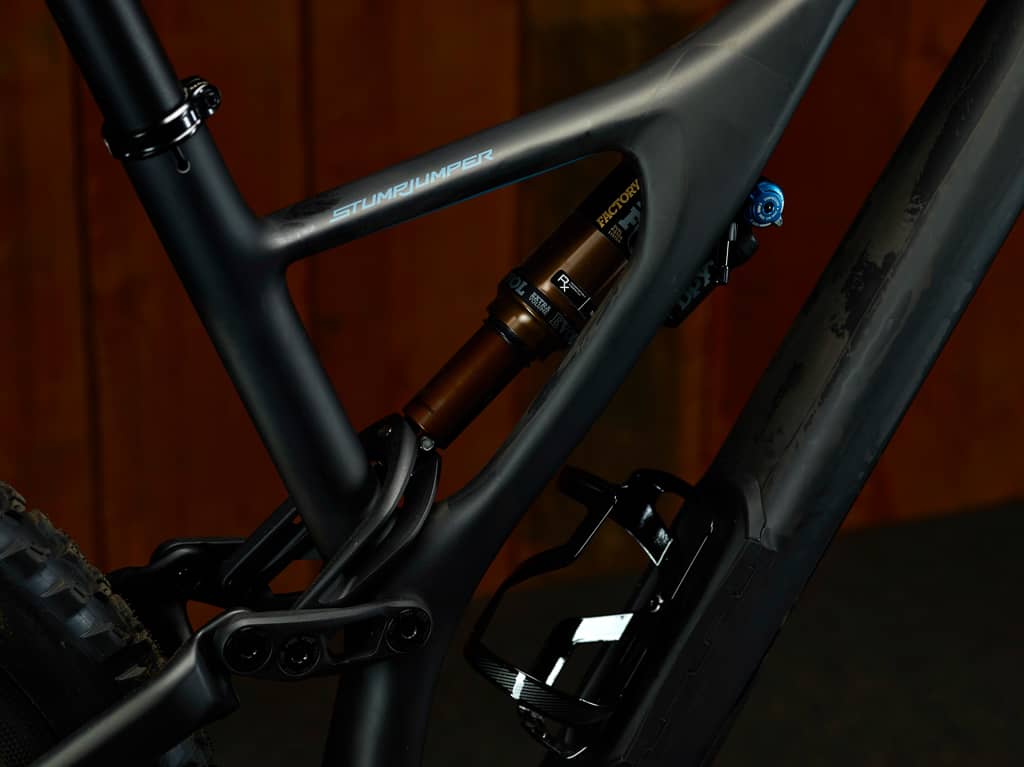 For most respondents, the two biggest factors in their decision were looks and brand loyalty. Beauty is in the eye of the beholder. For many, one bike just had the right shape or color options to attract their eye. One employee pointed to the Stumpjumper’s asymmetrical frame and carbon arm wrapping around the shock as “the hottest thing in mountain biking.” Another liked the “squareness” of the Hightowers top tube and downtube.
For most respondents, the two biggest factors in their decision were looks and brand loyalty. Beauty is in the eye of the beholder. For many, one bike just had the right shape or color options to attract their eye. One employee pointed to the Stumpjumper’s asymmetrical frame and carbon arm wrapping around the shock as “the hottest thing in mountain biking.” Another liked the “squareness” of the Hightowers top tube and downtube.
Several riders reported preferring Santa Cruz’s plusher VPP system. However, one of our most talented climbers, a former pro XC racer, chose the Stumpjumper because he wanted a bike that would allow him to "descend hard, but still attack climbs like [he does] on a XC bike."
Several riders chose the Hightower because “it’s not a Specialized.” Specialized is one of the biggest bike manufacturers in the world and this draws ire from some more opinionated riders. Others prefer Specialized because of its reputation for performance and quality, and its history of race success. A few riders prefer Santa Cruz for its skater-like brand image and downhill history.
One respondent noted that the S.W.A.T. Box storage system in the Stumpjumper frame was enough to sway him.
Final thoughts
Stumpjumper vs. Hightower is actually a decision I have played around with myself. I’m always thinking about my next bike, and these two are top contenders for replacing my current trail bike.
I’m a bit partial to the Stumpjumper because I do think it is a beautiful bike. I like the sculpted shape of the frame. I think Specialized paint is always gorgeous and of high quality. I’ve also already owned the previous generation Hightower and Hightower LT. So it would make sense for me to change things up.
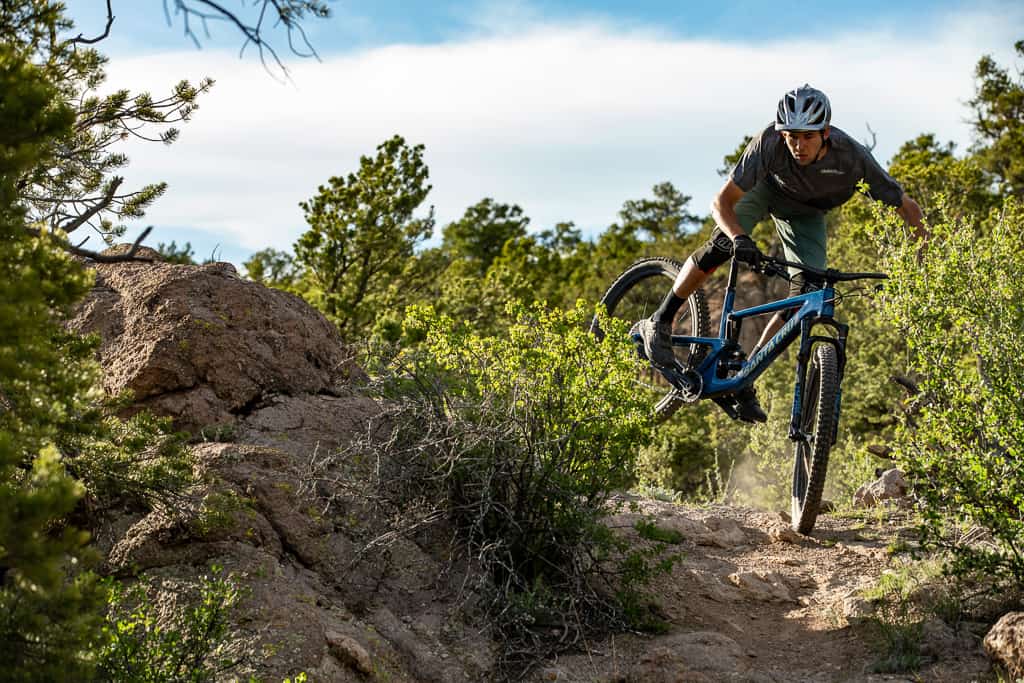 But somehow, I think if it came time to put cash down, I’d jump on the Hightower. The one thing swaying me is the extra travel and slightly plusher suspension. Descending is my weakness, and I want all the help I can get. I can live with a bit more weight and slightly less efficient climbing.
But somehow, I think if it came time to put cash down, I’d jump on the Hightower. The one thing swaying me is the extra travel and slightly plusher suspension. Descending is my weakness, and I want all the help I can get. I can live with a bit more weight and slightly less efficient climbing.
Which bike would you choose? Or is there another mid-travel trail bike out there we need to watch out for? Let us know in the comments!
Photos courtesy of Specialized Bicycles and Santa Cruz Bicycles.























